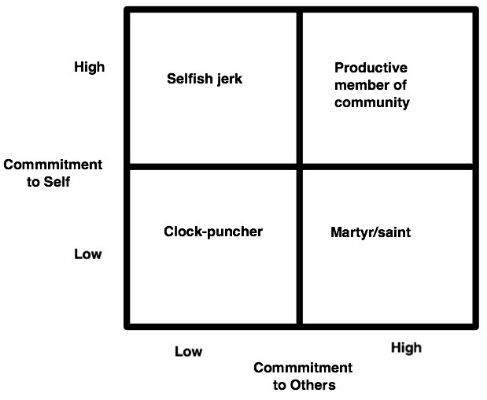In researching and writing my next book (Building the Fit Organization, coming out in September!), I’ve been thinking a lot about what constitutes good leadership—or what I call “fit” leadership.
Charles Kettering, the head of research at General Motors in the early 20th century famously said that
The biggest job we have is to teach a newly hired employee how to fail intelligently. We have to train him to experiment over and over and to keep on trying and failing until he learns what will work.
That’s an admirable sentiment, and more recently it’s been echoed to the level of a platitude by the Silicon Valley mantra of “fail fast.” But before leaders can teach people how to fail intelligently, they have to drive the fear out of the organization so that employees are willing to experiment in the first place.
“Fear” is a strong word—so strong that I’d bet most leaders don’t think that fear runs through their organization. But W.E. Deming was right: careful reflection reveals anxiety—and yes, fear—that all the foosball tables, free massages, and Red Bull-stocked refrigerators can’t eliminate. Employees are afraid that new methods or technology will make their skills obsolete and threaten their jobs. They’re afraid that mistakes will be thrown in their face during the year-end performance evaluation. They’re afraid of having management criticize, ridicule, or ignore their suggestions. They’re afraid of being attacked for errors and failures, even if they’re committed in the service of improvement. They’re afraid of what’s known in the healthcare field as “name, blame, and shame.”
The first, and perhaps most important, step to driving out fear is a fundamental shift in attitude towards problems. Most leaders hate problems. They want their operations and their processes to run smoothly. They get frustrated when something goes wrong. They blame people. They try to find out who is responsible for the problem. By contrast—and at the risk of sounding hyperbolic—fit leaders love their problems. Problems are not things to be hidden. They’re not things to fear. They’re not even negative things—they’re improvement opportunities in disguise. A fit leader frames the problem as nothing more threatening than the gap between where the organization is today and where it wants to be tomorrow.
To that end, a fit leader tries to find out why a problem occurred, not who screwed up. (In fact, if someone did screw up, a fit leader asks why the system made it so easy for the person to screw up. The blame, such as it exists, is on the system, not the person. Why, not who.) When good leaders do blame people for a problem, they point the finger only at themselves.
Larry Barrett, VP of Operations at Sage Rods, exemplifies fit leadership. He views most problems as a signal that the leaders have erred. He tells this story:
One thing that we do now in our team meetings is to publicly recognize the responsibility that the leaders have. Especially when we are talking about an obstacle or an area where we’re not hitting our goals, I’ll make a point of calling out my responsibility. I encourage my other leaders to emulate this type of accountability and transparency. A common example is when we’re asking the team to work overtime. It’s hard to think of a scenario where this is not my fault as the leader, and I make sure that the team knows: (1) that I own this; (2) what I plan to do to fix it; and (3) how long it might take. We get better results with this style of communication.
That kind of self-imposed accountability drives out fear, and creates the kind of environment where people feel free to experiment. . . and fail.
What are you doing to drive out fear?








